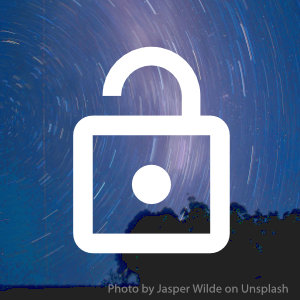Celestial events
Tarragona, SPAIN
Friday, 9 June 2023
TodayInformation on the Personal Daily Horoscope
In the personal daily horoscope, a selected transit to your birth chart describes your mood or situation on that day. Transits which are particularly important are marked by *, **, or *** next to the heading. The text used for the transits are taken mainly from Robert Hand's 'Planets in Transit'. (What are transits?)
Subscription of the Extended Daily Horoscope
The Daily Horoscope for today, yesterday and tomorrow is free for everyone to use. Additional interesting information is accessible for subscribers only, e.g. the extended day choice, free transit selection, the love horoscope and planetary hours. For the duration of the subscription the website will be automatically free of 3rd party advertisements. Here you can find more information on the subscription.
Until further notice, the extended transit selection is free for all on Thursdays.
Why is the extended transit navigation in the daily horoscope free for Thursdays?
We would like to give all non-subscribers an opportunity to see what the Extended Daily Horoscope has to offer. Therefore, the navigation features for "Other transits occurring today" and "Important long-term influences" will be free for everyone on each Thursday until further notice.
By Thursday we mean, that the horoscope is for that day, i.e. it will be the 'tomorrow' horoscope on your Wednesday visit, or the 'yesterday' horoscope on Fridays. The local timezone of your reference place counts.
Settings
The following settings for the Daily Horoscope can be adjusted in your user profile ("My Astro", "View/edit preferences and subscriptions"):
- Suppress images in Daily Horoscope
- Suppress colour images in Daily Horoscope
- Suppress Love Horoscope feature
- Suppress titles in long-term transit list
-
Mercury sextile Neptune, at 11:14 p.m. (9 June - 10 June)*
-
Venus square Moon's Node, on 8 June (7 June - 9 June)
-
Sun sextile Chiron, on 10 June (9 June - 11 June)
-
Sun sextile Lilith, on 7 June (6 June - 9 June)
-
Sunrise, at 6:22 a.m.
Rising and Setting Times of the Sun and Moon
The rising and setting times given for the Sun and Moon refer to the moment when the topmost point of the solar or lunar disc can be seen on the horizon. This is the established astronomical method of calculation. The celestial body does not have to be exactly conjunct the Ascendant or Descendant at that time.
When the Sun is exactly conjunct the Ascendant, it means that the center of the solar disc, not its top margin, is right on the geometrical horizon. Due to the atmospheric refraction of the Sun's rays, however , the whole Sun can be seen at that point in time.
For the Moon, the factual situation is even more complex, because it is not usually found directly on the plane of the zodiac (ecliptical latitude).
-
Sunset, at 9:26 p.m.
Rising and Setting Times of the Sun and Moon
The rising and setting times given for the Sun and Moon refer to the moment when the topmost point of the solar or lunar disc can be seen on the horizon. This is the established astronomical method of calculation. The celestial body does not have to be exactly conjunct the Ascendant or Descendant at that time.
When the Sun is exactly conjunct the Ascendant, it means that the center of the solar disc, not its top margin, is right on the geometrical horizon. Due to the atmospheric refraction of the Sun's rays, however , the whole Sun can be seen at that point in time.
For the Moon, the factual situation is even more complex, because it is not usually found directly on the plane of the zodiac (ecliptical latitude).
-
Moon square Mercury, at 6:24 a.m. (4:32 a.m. - 8:15 a.m.)
-
voc Moon void of course (Aquarius), at 6:24 a.m. (6:24 a.m. - 12:14 p.m.)
-
Moon enters Pisces, at 12:14 p.m. (9 June, 12:14 p.m. - 11 June, 3:20 p.m.)
-
Moon sextile Moon's Node, at 3:10 p.m. (1:30 p.m. - 4:51 p.m.)
-
Moon sextile Moon's Node, at 5:20 p.m. (3:40 p.m. - 7:01 p.m.)
-
Moon sextile Jupiter, at 9:02 p.m. (7:20 p.m. - 10:45 p.m.)
-
Moon conjunction Saturn, on 10 June (9 June, 10:34 p.m. - 10 June, 1:57 a.m.)
-
Moonrise, at 1:45 a.m.
Rising and Setting Times of the Sun and Moon
The rising and setting times given for the Sun and Moon refer to the moment when the topmost point of the solar or lunar disc can be seen on the horizon. This is the established astronomical method of calculation. The celestial body does not have to be exactly conjunct the Ascendant or Descendant at that time.
When the Sun is exactly conjunct the Ascendant, it means that the center of the solar disc, not its top margin, is right on the geometrical horizon. Due to the atmospheric refraction of the Sun's rays, however , the whole Sun can be seen at that point in time.
For the Moon, the factual situation is even more complex, because it is not usually found directly on the plane of the zodiac (ecliptical latitude).
-
Moonset, at 12:01 p.m.
Rising and Setting Times of the Sun and Moon
The rising and setting times given for the Sun and Moon refer to the moment when the topmost point of the solar or lunar disc can be seen on the horizon. This is the established astronomical method of calculation. The celestial body does not have to be exactly conjunct the Ascendant or Descendant at that time.
When the Sun is exactly conjunct the Ascendant, it means that the center of the solar disc, not its top margin, is right on the geometrical horizon. Due to the atmospheric refraction of the Sun's rays, however , the whole Sun can be seen at that point in time.
For the Moon, the factual situation is even more complex, because it is not usually found directly on the plane of the zodiac (ecliptical latitude).
Transits of this day (for Marilyn Monroe)
Accuracy of Transit Times
Please note that the timing of transits over axes and house cusps strongly depends on the accuracy or certainty of the birth time. For example, if there is an uncertainty of only 1 minute, the exact moment of the transit can shift considerably, even by days in the case of slow transiting planets. To a smaller extent this also happens with transits over the fast planets (Moon, Sun, Mercury, Venus). This is not a problem for the astrological interpretation, because slow transits are valid for a long time. Still it would not make much sense to calculate a chart of the moment of the transit, if there is such a considerable shift.
In order to find out whether or not a transit is concerned, you can click on the blue + and move the mouse over the link "with natal chart". Then it will be shown how much the timing of the transit changes, if the birth time is changed by 1 minute. If the resulting difference is less than 4 minutes, no such information is given.
-
Tr. Mercury square Jupiter, at 11:32 a.m. (8 June - 10 June)
-
Tr. Same lunar phase as natal, at 6:52 a.m. (6:52 a.m. - 6:52 a.m.)
-
Tr. Moon conjunction Jupiter, at 6:56 a.m. (8 June, 10:37 p.m. - 9 June, 3:17 p.m.)
-
Tr. Moon sextile Venus, at 10:09 a.m. (1:49 a.m. - 6:31 p.m.)
-
Tr. Moon sextile Chiron, at 12:54 p.m. (4:33 a.m. - 9:17 p.m.)
-
Tr. Moon sextile MC, at 10:19 p.m. (9 June, 1:55 p.m. - 10 June, 6:45 a.m.)
-
8 Tr. Moon in 8th house, at 10:32 p.m. (9 June, 10:32 p.m. - 11 June, 9:43 p.m.)
-
Tr. Moon square Mercury, at 11:37 p.m. (9 June, 3:13 p.m. - 10 June, 8:04 a.m.)
Long-term transits (for Marilyn Monroe)
-
Tr. Chiron sextile Moon, on 8 June (16 May 2023, 2:42 a.m. - 17 Feb. 2025, 4:18 p.m.)
- 10
- 12
- 12
-
11 Tr. Sun in 11th house, on 1 June (1 June - 5 July)
Transit Calendar (PDF)
Planetary Hours for Friday, day of Venus
Planetary Hours and Planetary Days
According to ancient lore, each day and each hour of a day is attributed to a particular planet. The purpose of this attribution is to find the right moment for a particular activity. For example, according to this lore, the right moment for love matters would be the hour ruled by Venus on a Venus day.
Planetary hours are calculated as follows: We calculate the length of time between sunrise and sunset and divide it into 12 equal sections. In the same manner, we divide the length of time between sunset and the following sunrise into 12 equal sections. The resulting 24 sections are called 'planetary hours'. Naturally, they are not ordinary 60-minute hours but can be longer or shorter. The 24 planetary hours make up a planetary day. Consequently, a planetary day lasts from sunrise on one day to sunrise on the next day.
The 24 planetary hours are attributed to the seven classical planets in astrology in the following order:
Saturn - Jupiter - Mars - Sun - Venus - Mercury - Moon - then from starting again with Saturn - Jupiter - etc.
- 23:40 - 00:25 Mars
- 00:25 - 01:09 Sun
- 01:09 - 01:54 Venus
- 01:54 - 02:39 Mercury
- 02:39 - 03:24 Moon
- 03:24 - 04:08 Saturn
- 04:08 - 04:53 Jupiter
- 04:53 - 05:38 Mars
- 05:38 - 06:22 Sun
- Sunrise
- 06:22 - 07:38 Venus
- 07:38 - 08:53 Mercury
- 08:53 - 10:08 Moon
- 10:08 - 11:24 Saturn
- 11:24 - 12:39 Jupiter
- 12:39 - 13:54 Mars
- 13:54 - 15:10 Sun
- 15:10 - 16:25 Venus
- 16:25 - 17:40 Mercury
- 17:40 - 18:56 Moon
- 18:56 - 20:11 Saturn
- 20:11 - 21:26 Jupiter
- Sunset
- 21:26 - 22:11 Mars
- 22:11 - 22:56 Sun
- 22:56 - 23:40 Venus
- 23:40 - 00:25 Mercury
Are you in a different time zone to the one you were born in? If so, you might want to enter your present location as a place of reference, so that the date and the exact time correspond with wherever you are. To do this, click on 'Change Reference Place' at the bottom of the Daily Horoscope. This is NOT very important, please read on!
Minimal importance of reference place
Transits depend only on where you are born (because this influences your Ascendant and houses). They do NOT depend on where you live. The place where you live has no importance whatsoever for any horoscope reading on this website.
The only exception is of minimal impact. The time when
a transit occurs is fixed in Universal Time (aka Greenwich Time). It is the
time when a moving planet crosses a particular degree of the zodiac, where your
birth planet (or house cusps) is considered to have left a mark. This time is
the same, from wherever on the earth you may be watching! Only the local clock
time for this moment however will be different, depending on the time zone,
in which you live. The 'reference place' at the bottom of the daily horoscope
page is used to determine, in which time zone these transit times should be
printed. If you know about time zones, you can however do the conversion from
one to the other just as well in your head, as you often do when you watch a
nation-wide or world-wide TV network.
The beginning and the end of each day refer to the local timezone at this location.




